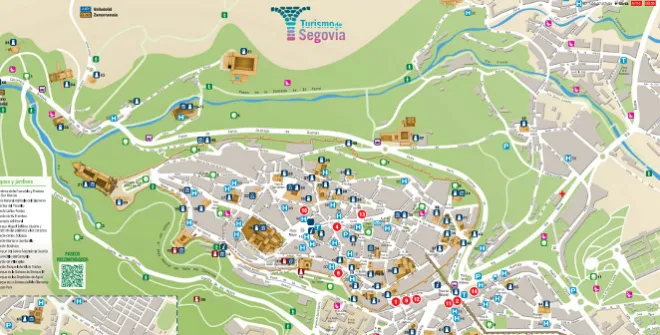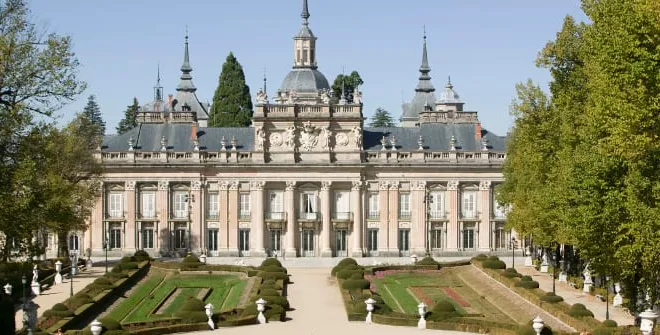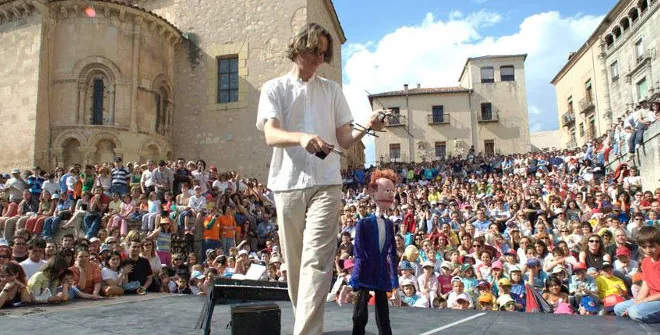Segovia
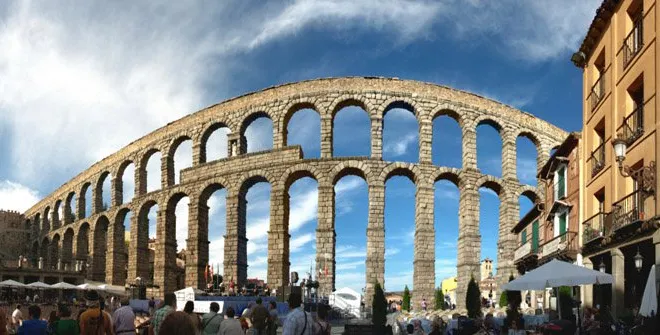
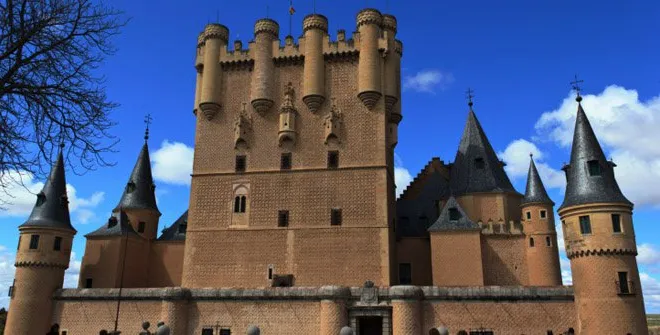
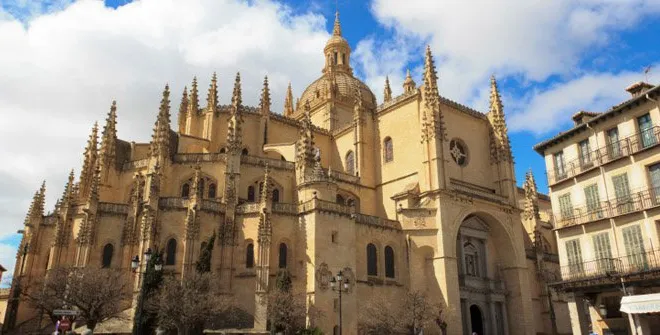
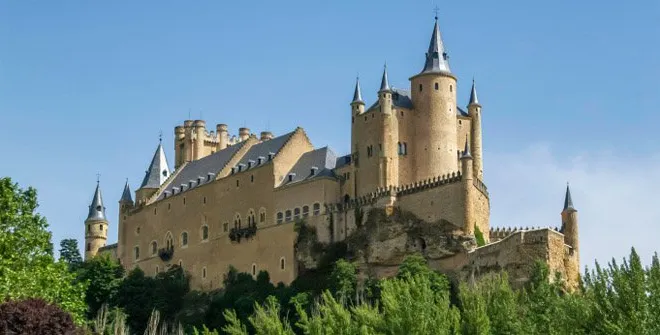
Close to Madrid, Segovia still retains the spirit of old Spanish cities. These are some of the monuments valued by UNESCO to declare it a World Heritage site in 1985.
The Aqueduct
It is one of the most spectacular legacies of the Roman Empire in Spain. It is made up of 166 arches spanning the more than 17 kilometres of the aqueduct, which transported water from La Acebeda to the Alcázar, defying the laws of gravity, since the only thing that keeps the structure standing is its balance of forces; no kind of mortar was used in its construction. Legend says that Segovia's Aqueduct is the result of a pact between a girl and the devil in which she offered him her soul in exchange for water to reach her house before the crack of dawn.
The Cathedral
The apse of this temple, the construction of which began in 1525, marks the boundaries between the Plaza Mayor and the Judería Vieja (Old Jewish Quarter). Inside, the 16th century stained glass windows and the Altarpiece designed by Sabatini are particularly noteworthy.
The Alcázar
The splendid views over the Pinarillo (with the Jewish Cemetery), Zamarramala and the Church of Vera Cruz are reason enough to make your way to this old castle. A deep moat with its drawbridge provides access to this fortress, which became the royal residence in the 13th century, and from whose tower, Alfonso X studied the firmament. To the left, lies the Casa de la Química, built in the period of the Enlightenment, which was Louis Proust's research centre.
Other Places of Interest
- El Azoguejo (diminutive of zoco, the Spanish word for souk). Despite the changes it has undergone over the years, the monumental heritage continues to be the heart of the city. Its streets were the point where the roads converged, and these became the meeting place for traders. Nowadays, it is an excellent starting point to discover the city.
- Canonjías Neighbourhood. This area is where the Casa de la Imprenta and the Casa de la Inquisición were located, but it was also a shelter for artists such as Zuolaga and Maurice Fromkes. It was precisely the American painter who gave the gardens of Calle de Velarde their name, from which the valley of Eresma can be admired.
- Antonio Machado House. At number 5, Calle Desamparados, you can visit the former Casa de Huéspedes, where Antonio Machado lived for 12 years.
- Caballeros Neighbourhood. This area is home to some of the most interesting Romanesque churches in the city: Trinidad, San Nicolás, San Martín and San Sebastián. Inside the Dominican convent, visitors will be able to see the sculpture in the Tower of Hercules, which represents Hercules, founder of the city.
- Old Synagogue. What was once the largest synagogue in Segovia is now the Corpus Christi Convent.
- Segovia City Walls. With a perimeter of more than 3,000 metres, these walls enclose the city and still retain 3 of their 5 original gates. Interestingly, gravestones from the ancient Roman necropolis were used in their construction.
- La Judería. Take a stroll around the charming streets of the city’s old Jewish Quarter, including Judería Vieja, Santa Ana, Corralillo de los huesos…, marvel at the San Andrés Gate, or visit the Judería Education Centre… these are just a few options for what you can do in this area.
- Esteban Vicente Museum of Modern Art. It’s well worth a trip to the centre dedicated to this artist, as well as other museums in the city such as the Museum of Segovia.
Certain sculptures found in the region lead to the belief that Segovia's roots were Celtiberian. The Roman Empire soon conquered these lands, providing them with spectacular buildings such as the Aqueduct.
Historians maintain that, after the Muslim invasion, Segovia was abandoned by its inhabitants. It wasn't until the end of the 11th century that it recovered its energy, led by Alfonso VI and Christians from various parts of the north of the Iberian Peninsula and, even, France.
The Middle Ages enabled Segovia to enjoy great splendour; numerous Romanesque churches were built, its baking industry grew strong and its territory extended beyond the sierra. By the time the main Jewish quarter was founded, the city had become home to the royal court, thanks to Alfonso X The Wise, who designated the Alcázar as his residence. Not in vain, in 1474, Isabel la Católica was crowned queen of Castile in the church of San Miguel.
Later on, its industrial prosperity allowed aristocrats and rich manufacturers, who competed in the palaces they built, to settle there in the 16th and 17th centuries. It was they who provided the city with such wonderful architecture, adorned with Renaissance patios and gardens and Baroque coats of arms. Nevertheless, the 19th century was synonymous with the decline of the city, which was invaded by the French and the Carlists. It later became a refuge to artists and intellectuals such as Zuloaga or Antonio Machado, the poet, who chose to move to Segovia to live and develop his dream of building the University of the People, a university for everyone.
Among the most prominent products that will tempt those who explore the Segovian shops are the copper cauldrons and mirror frames, Segovian-stitch embroideries, garments woven with Pradeña wool, and products made from Maderuelo leather or Ayllón plaited straw, all of which are handcrafted. To really show it off, popular open-air markets have been held for decades, where pulses and vegetables, flowers, clothes and traditional bakery are also available for sale.
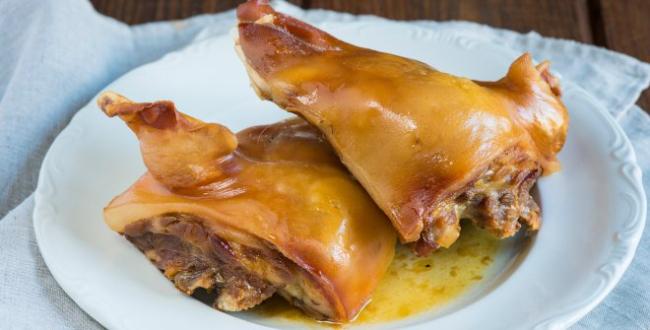
The secret of Segovia's rich cuisine lies not in the way the food is made, but in the quality of the local products with which the recipes, inherited from the traditional kitchens of old taverns and from the stoves of the homes of the locals themselves, are made. The closeness of the mountains provides a large variety of mushrooms and fungi, while the orchards that still remain in the valleys of Segovia produce fresh fruit and vegetables.
Segovia is surrounded by two mountain rivers that provide delicious trout for its cuisine. No traveller can end a visit without having tasted the Segovian speciality: the suckling or roast pork, which is at its prime when the skin is so crunchy that it can be carved with the side of a plate. All of that, washed down with local wines, the whites from Nieva or the reds from Valtiendas.
A typical restaurant where you can taste the traditional roast suckling pig is Mesón de Cándido, which offers traditional Castilian cuisine next to the Aqueduct. Also the José María Restaurant by the hand of the chef José María Ruiz Benito, one of the greatest exponents of Segovian cuisine. In the centre of Madrid, you can also sample typical Segovian-style roast suckling pig at the restaurant Horno de Juan. Located in the area of Goya, it has been offering the finest Segovian cuisine for over 50 years.
To complete this menu, you must try the baked goods such as rosquillas, soplillos, florones, ojuelas and, above all, Segovian punch -sponge, cream and toasted marzipan- made by cloister nuns and pattisiers.
One of the most traditional fiestas in Segovia is held in the Zamarramala neighbourhood where everyone remembers the heroic deeds of the Segovian women who, in the 13th century, were able to entertain the Muslims with their dances and charm while the men took back the Alcázar. So, on the Sunday closest to the 5th of February, the Saint Águeda festivities hand control over to the women. Two lady mayors are appointed and the "Golden Mankiller" prize is awarded. The celebration climaxes with the burning of the pelele (rag doll).
- By Car: 70 minutes via the A-6 and the AP-6 toll motorway or via the N-603 (San Rafael-Segovia)
- By Coach: 65 minutes from Príncipe Pío Station.
- By Train: 25 minutes on the AVE from Madrid - Chamartín - Clara Campoamor Station
For further information: Segovia Council
Other Tourist Trains
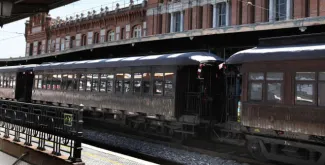
The Strawberry Train
A period train running between Madrid and Aranjuez recreates the Region of Madrid’s first rail line. Spring Season: Sat & Sun, from 22 April to 25 June.
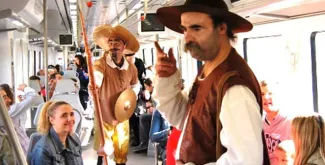
Cervantes Train
A unique way of travelling to and discovering Alcalá de Henares, the birthplace of Miguel de Cervantes. Starting on 16 April!
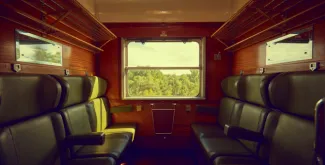
The Philip II Train
Travel from Madrid to San Lorenzo de El Escorial on a vintage train and unveil the secrets of King Philip II’s empire. Every week-end till 10 December.
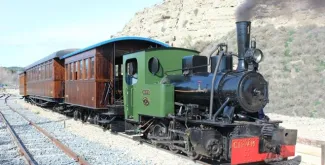
Arganda Train
Get on this vintage train whose steam locomotive pushes its way past stunning landscapes in southeast Madrid. Every Sunday, from 5 March to 28 May.
